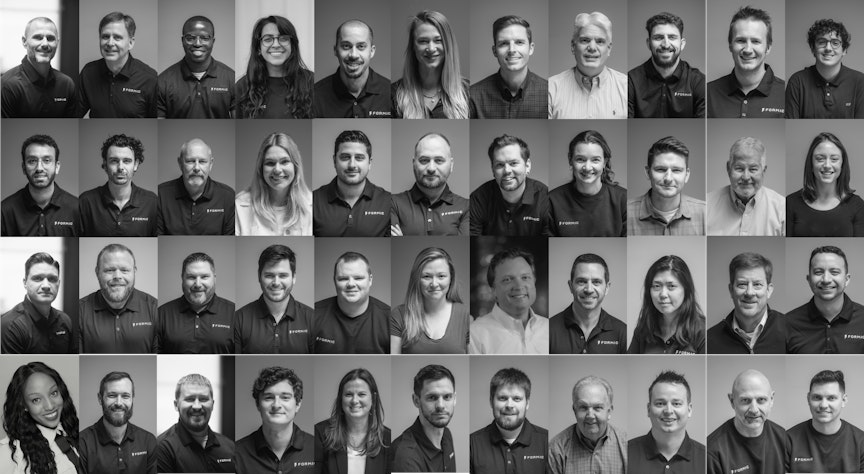Building and Financing Automation, versus Robotics-as-a-Service ("RaaS")
Automation is practically a requirement for any manufacturing business that expects to compete today. An established company that wants to get automation typically has to pay with cash, take out a loan (e.g. from a bank), or get specific equipment financing to purchase the equipment. This CAPEX equipment purchase uses money that the business could otherwise have used to grow.
However, there is an additional aspect that companies may not consider—the risk and cost of the implementation. Unless a company has a staff to manage automation, just buying/financing the equipment is only part of the consideration. If a company finances a system that doesn’t work they will be making payments for years on a very expensive “paper weight” (as one potential client described his experience with the traditional way to acquire automation).
Challenges of Off-the-Shelf versus Custom Equipment
Increasing productivity through automation is all about implementing the most efficient solution for your facility’s operations. Some firms market what they call “off-the-shelf” solutions to address the (very reasonable) concerns that companies might have about custom solutions. These systems are marketed with the goal of reducing implementation challenges and financing complexities.
However, off-the-shelf solutions often require: (1) at least some level of customization and programming, or (2) a company to adjust their manufacturing approach so that the off-the-shelf solution will work—or both. If a company has to change its approach to adhere to the requirements of an off-the-shelf system this can also require not just changes to equipment and hardware, but also changes to processes and procedures that can require retraining of staff.
Additionally, even if the robot itself is “off-the-shelf”, rarely does a single component or OEM comprise an entire functional system. Typically, robots include ancillary components that are a major cost consideration, such as sensors, grippers, and mounts. These vary greatly from application to application.
Alternatively, implementing and financing a custom solution has many moving parts, spread amongst many parties and usually requires 1 to 5 months of time to complete, but, if done correctly, will usually result in the most seamless and frictionless long-term solution for a company.
Companies want the ease of a “1-stop”, “off-the-shelf” solution, but with the long-term benefits and seamless integration of a custom solution—Formic’s RaaS “checks” all these boxes.
When Industrial Robots breaks, who do you call...?
Although this can surprise companies, often warranties on parts, labor and automation system installs can be one year, and sometimes even less. With proper maintenance and support an automation system can be as reliable (and often more reliable) than humans—robots don’t get sick or quit because they have found a better job. However, when an automation system requires maintenance or breaks (potentially stopping key parts of a company’s production process), unless a company has experienced robotics engineers on staff, they will need to scramble to bring in a third party to get the system running again. This can often take longer than a company anticipates.
By way of analogy, if your car breaks and you take it to the shop, you still have to pay your auto loan even if the car isn’t running. Additionally, the mechanic who is fixing your car has no incentive to fix it quickly and has limited repercussions if they fix it badly.
In the case of Formic’s RaaS, the Formic Guarantee makes sure that there is alignment of interest between Formic and our customers—Formic’s automation systems will perform to quantifiable metrics, or Formic will provide a credit for the lost time. As Formic constantly monitors and tracks our deployed systems, Formic will hopefully identify and prevent problems before they occur, but if problems do occur, Formic has staff available to quickly respond both remotely, or on-site—with no additional charges.
Money is not free.
A company can choose to fund the purchase of automation from cash—however, could this cash have been better used to grow other core aspects of its business (hire more salespeople, expand into new products or territories, etc.)? Funding the purchase of automation with a loan is also an option, however this often requires a lengthy credit underwriting process and could bring lender-required restrictions and covenants.
There's no "built-in" financing structure for upgrades
Financing (loan or lease) an automation system is fine, but your financing provider will not give you upgrades and enhancements to keep your system running at peak performance (e.g. your auto finance company is not going to do maintenance and make sure your car keeps running)—even just getting additional capital for upgrades from a financing party can be difficult. However, with RaaS, what is provided is the result (e.g. moving/bending/making an item). Therefore, with RaaS, if the system is not working optimally (e.g. running slow) Formic will make any needed changes (at no cost) to keep the automation system running smoothly and achieving the specified metrics for as long as our customer is using the system.
Alternative approach: Hire a robot for as low as minimum wage
Formic is an innovator in American automation, offering robotic systems and the expertise needed to make sure that they're up and running from Day 1 and onwards, for an hourly rate. This is via a robotics-as-a-service model with a particular focus on small and medium businesses. Formic partners with our customers, both upfront and ongoing, to bring them the results of automation, without the challenges and risks inherent in the traditional methods of financing and deploying automation and robotics.
Download the Free Guide: How to Get Started with Robotic Automation
Automating with Formic, the only question manufacturers need to ask themselves is: what repetitive manual tasks can be automated in my facility right now?


